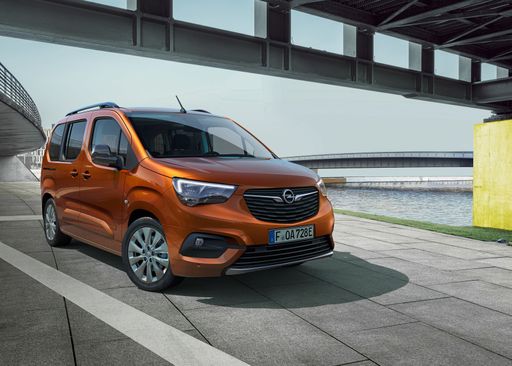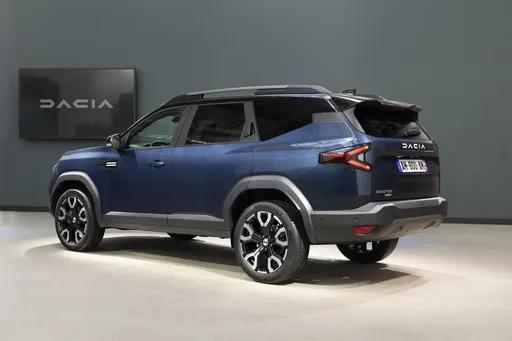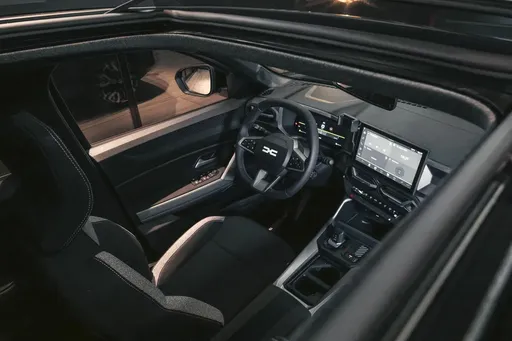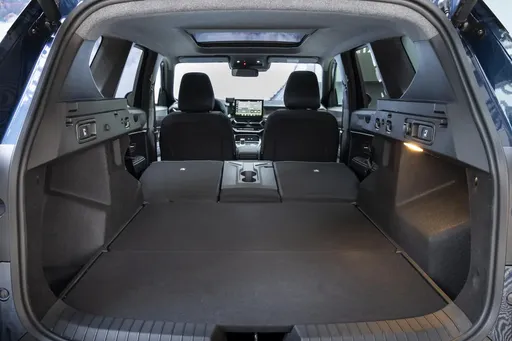Vauxhall Combo vs Dacia Bigster – Which car suits you better?
Compare performance, boot capacity, efficiency and price at a glance.
Find out which car is the better choice for you – Vauxhall Combo or Dacia Bigster?
Costs and Efficiency:
Looking at overall running costs, both models reveal some interesting differences in everyday economy.
Dacia Bigster has a clearly perceptible advantage in terms of price – it starts at 20600 £, while the Vauxhall Combo costs 24800 £. That’s a price difference of around 4286 £.
Fuel consumption also shows a difference: Dacia Bigster manages with 4.70 L and is therefore slightly more efficient than the Vauxhall Combo with 5.50 L. The difference is about 0.80 L per 100 km.
Engine and Performance:
Under the bonnet, it becomes clear which model is tuned for sportiness and which one takes the lead when you hit the accelerator.
When it comes to engine power, the Dacia Bigster has a somewhat edge – offering 155 HP compared to 136 HP. That’s roughly 19 HP more horsepower.
In acceleration from 0 to 100 km/h, the Dacia Bigster is a bit quicker – completing the sprint in 9.70 s, while the Vauxhall Combo takes 11.30 s. That’s about 1.60 s faster.
In terms of top speed, the Vauxhall Combo performs hardly perceptible better – reaching 184 km/h, while the Dacia Bigster tops out at 180 km/h. The difference is around 4 km/h.
There’s also a difference in torque: Vauxhall Combo pulls clearly perceptible stronger with 300 Nm compared to 230 Nm. That’s about 70 Nm difference.
Space and Everyday Use:
Whether family car or daily driver – which one offers more room, flexibility and comfort?
Seats: Vauxhall Combo offers noticeable more seating capacity – 7 vs 5.
In curb weight, Dacia Bigster is slight lighter – 1425 kg compared to 1530 kg. The difference is around 105 kg.
In terms of boot space, the Vauxhall Combo offers evident more room – 850 L compared to 667 L. That’s a difference of about 183 L.
In maximum load capacity, the Vauxhall Combo performs distinct better – up to 2693 L, which is about 756 L more than the Dacia Bigster.
When it comes to payload, Vauxhall Combo significantly takes the win – 840 kg compared to 467 kg. That’s a difference of about 373 kg.
Who wins the race?
The Vauxhall Combo proves to be wins solidly and therefore becomes our DriveDuel Champion!
Vauxhall Combo is the better all-rounder in this comparison.
 @ Opel / Stellantis Media
@ Opel / Stellantis Media
Vauxhall Combo
Vauxhall Combo
The Opel Combo high-roof estate car stands out for its impressive versatility, making it an ideal choice for both families and professionals. Its spacious interior and clever storage solutions ensure a comfortable ride and plenty of room for all your needs. With a focus on practicality and efficient design, the Combo seamlessly combines functionality with modern driving technology.
details @ Opel / Stellantis Media
@ Opel / Stellantis Media
 @ Opel / Stellantis Media
@ Opel / Stellantis Media
 @ Opel / Stellantis Media
@ Opel / Stellantis Media
 @ Opel / Stellantis Media
@ Opel / Stellantis Media
Dacia Bigster
The Bigster is poised to redefine the SUV segment with its bold design and spacious interior, catering to the needs of both families and adventure seekers alike. Emphasizing sustainability and practicality, this model reflects a modern approach to automotive engineering, making it a compelling choice for environmentally conscious drivers. With its striking presence on the road, the Bigster not only captures attention but also embodies a new era of versatile mobility.
details @ Dacia / Renault Group Media
@ Dacia / Renault Group Media
 @ Dacia / Renault Group Media
@ Dacia / Renault Group Media
 @ Dacia / Renault Group Media
@ Dacia / Renault Group Media
 @ Dacia / Renault Group Media
@ Dacia / Renault Group Media
 @ Dacia / Renault Group Media
@ Dacia / Renault Group Media
 @ Opel / Stellantis Media
@ Opel / Stellantis Media
|
 @ Dacia / Renault Group Media
@ Dacia / Renault Group Media
|
|
|
|
Costs and Consumption |
|
|---|---|
|
Price
24800 - 36500 £
|
Price
20600 - 26600 £
|
|
Consumption L/100km
5.5 - 5.9 L
|
Consumption L/100km
4.7 - 7.1 L
|
|
Consumption kWh/100km
18.5 - 18.8 kWh
|
Consumption kWh/100km
-
|
|
Electric Range
333 - 345 km
|
Electric Range
-
|
|
Battery Capacity
-
|
Battery Capacity
-
|
|
co2
0 - 155 g/km
|
co2
106 - 137 g/km
|
|
Fuel tank capacity
53 L
|
Fuel tank capacity
50 - 55 L
|
Dimensions and Body |
|
|---|---|
|
Body Type
High Roof Estate
|
Body Type
SUV
|
|
Seats
5 - 7
|
Seats
5
|
|
Doors
4 - 5
|
Doors
5
|
|
Curb weight
1530 - 1922 kg
|
Curb weight
1425 - 1547 kg
|
|
Trunk capacity
597 - 850 L
|
Trunk capacity
510 - 667 L
|
|
Length
4410 - 4760 mm
|
Length
4570 mm
|
|
Width
1848 mm
|
Width
1813 mm
|
|
Height
1812 - 1818 mm
|
Height
1705 mm
|
|
Max trunk capacity
2126 - 2693 L
|
Max trunk capacity
1813 - 1937 L
|
|
Payload
430 - 840 kg
|
Payload
383 - 467 kg
|
Engine and Performance |
|
|---|---|
|
Engine Type
Electric, Diesel
|
Engine Type
Petrol MHEV, Full Hybrid, LPG
|
|
Transmission
Automatic, Manuel
|
Transmission
Manuel, Automatic
|
|
Transmission Detail
Reduction Gearbox, Manual Gearbox, Automatic Gearbox
|
Transmission Detail
Manual Gearbox, Automated Manual
|
|
Drive Type
Front-Wheel Drive
|
Drive Type
All-Wheel Drive, Front-Wheel Drive
|
|
Power HP
102 - 136 HP
|
Power HP
130 - 155 HP
|
|
Acceleration 0-100km/h
11.30 s
|
Acceleration 0-100km/h
9.7 - 11.2 s
|
|
Max Speed
135 - 184 km/h
|
Max Speed
180 km/h
|
|
Torque
250 - 300 Nm
|
Torque
230 Nm
|
|
Number of Cylinders
4
|
Number of Cylinders
3 - 4
|
|
Power kW
75 - 100 kW
|
Power kW
96 - 115 kW
|
|
Engine capacity
1499 cm3
|
Engine capacity
1199 - 1799 cm3
|
General |
|
|---|---|
|
Model Year
2024
|
Model Year
2025
|
|
CO2 Efficiency Class
A, E
|
CO2 Efficiency Class
E, D, C
|
|
Brand
Vauxhall
|
Brand
Dacia
|
What drive types are available for the Vauxhall Combo?
Available configurations include Front-Wheel Drive.
The prices and data displayed are estimates based on German list prices and may vary by country. This information is not legally binding.
